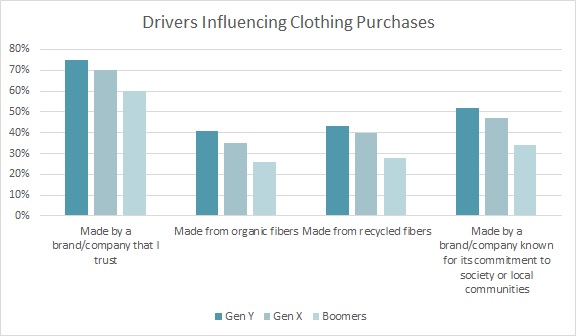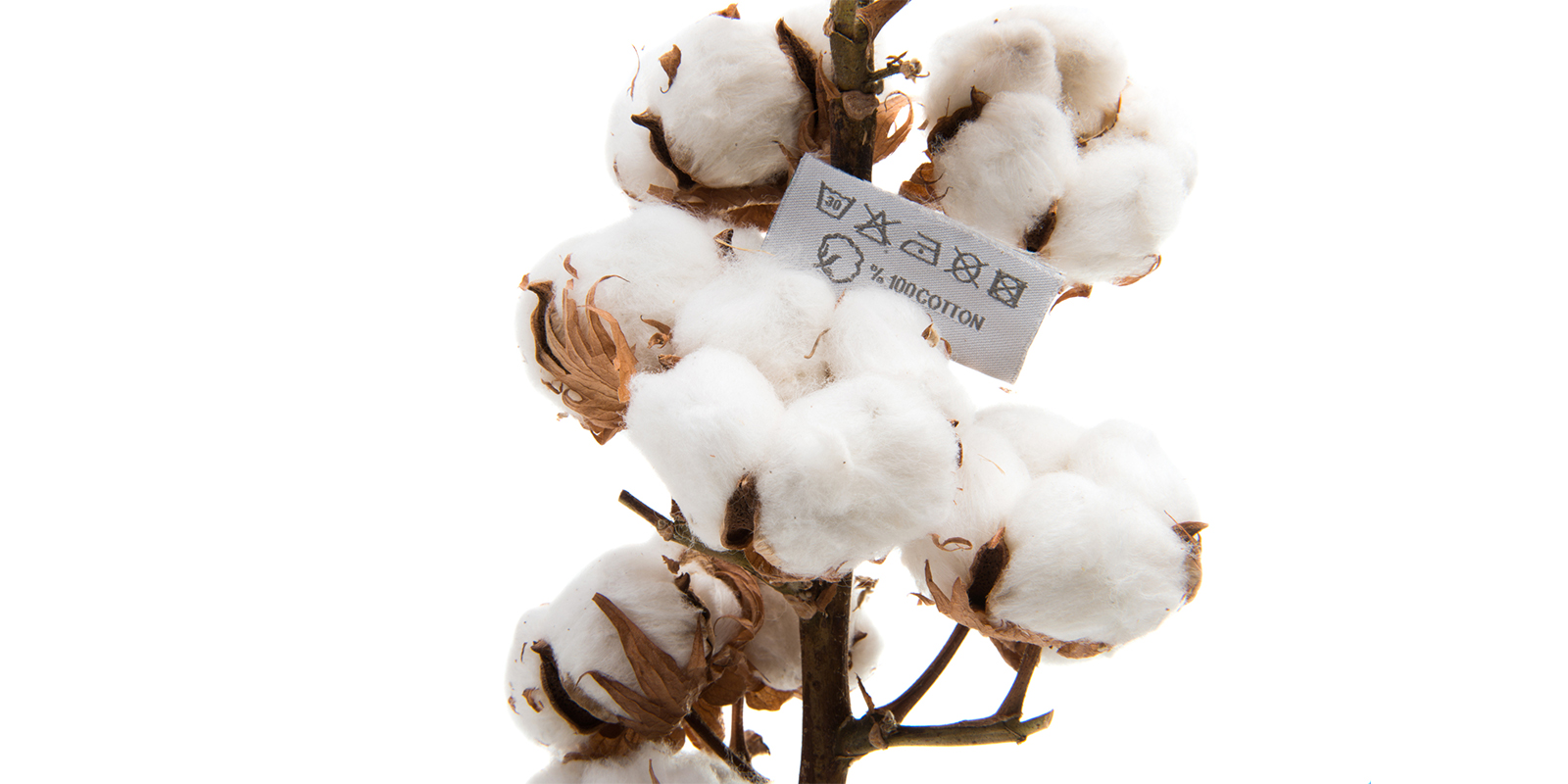From unboxings, hauls and try ons to deals, sales, and coupons. The combination of social media and fast fashion has helped coax people into acquiring far more clothes than ever before. That’s led to the disposal of a lot of items that don’t wear, wash, or fit well. Paradoxically, consumers are actually impressed by brands that embrace sustainability. And for most consumers, that primarily means labels that make clothes of natural fibers.
The Environmental Protection Agency estimated in 2015 that more than 16 million tons of textiles were discarded every year, with most of it (66 percent) ending up in landfills. The agency states the main source of textiles in municipal solid waste is discarded clothing. Unfortunately, about 60 percent of apparel textiles are made of synthetics like polyester, nylon, and acrylic, according to an article in Vox, which aren’t biodegradable. So that pile in the landfill? It’s set to only grow larger.
Despite their buying habits, consumers say environmental and social issues are important, and the clear majority (86 percent) wants brands to address them, according to the Cone Generation Z CRS study. That goes for 94 percent of Gen Z and 87 percent of Millennials.
Most consumers also feel that things need to be done differently. Overall, 75 percent of men and women, from Millennials to Boomers, says concerns about environmental change and sustainability “are very real and require change in our behaviors,” according to a Cotton Council International (CCI) and Cotton Incorporated Global Environmental Research Study. Over the past year, 45 percent have become more concerned than before.
Many apparel companies, both big and small, are taking note and trying to do right by the environment, as well as appeal to the consumer desire to be eco-conscious while being stylish.
Lou & Grey is part of the Ascena Retail Group, whose brands also include Ann Taylor and The Loft. Lou & Grey is targeted toward the Millennial woman, and it promotes sustainability and ethical conditions on its site. For fiscal 2018, the company released a report that launched its new strategy for all of its brands, which includes putting sustainability and responsibility at the forefront.
“We are committed to increasing our use of sustainable materials, engaging associates to reduce our materials and product waste, and helping our customers shop more sustainably,” the Ascena report states.
When it comes to clothes, just over two-fifths of consumers say sustainability has a “moderate or great deal of influence” on their apparel purchases, according to the CCI and Cotton Incorporated Environmental study. The traditional markers like fit (92 percent), comfort (91 percent), and price (90 percent) remain bigger purchase drivers. But when it comes to purchasing sustainable clothing, the top influencers include “doing my part” to help the environment (37 percent) and “it’s the right thing to do.”
The Environmental study finds that clothes made by a trusted brand (69 percent) or made from natural fibers such as cotton, wool, silk, etc., (67 percent) are the top drivers when it comes to sustainability and apparel purchases.

Swonne is a new sustainable men’s apparel brand that debuted as part of the CFDA’s Men’s Fashion Week for Spring/Summer 2019. Designer and founder Katie Golinczak says all of Swonne’s pieces contain natural fibers, and the company is committed to playing its part toward a sustainable future.
“Our indigo T-shirts and sweatshirts are 100 percent cotton,” Golinczak says. “Our jeans are made of the finest Japanese and American denim woven from recycled yarns — return cotton — or dead-stock denims sourced in the USA. If we use blends, there is a reason for it. We select fabrics with 1-to-2 percent blends only for comfort.”
The Swonne collection is produced using sustainable production processes, such as water recycling, chemical control, and eco-friendly dyeing. Golinczak also points out that in using more natural fibers, the company is reducing its chemical usage and pollutions in the ocean.
Synthetic microfiber particles, or microplastic pollution, is becoming a growing topic in the environmental community. Tiny synthetic fibers are turning up in all bodies of water, from the world’s oceans and rivers to residential tap water. And just like on land, these fibers are not biodegradable.
A 2016 study from Plymouth University in England determined that an average load of laundry releases more than 700,000 fibers into the effluent. New research published in the journal Royal Society Open Science found that the deepest trenches of the Pacific Ocean contain synthetic fibers, and the particles were found in more than 80 percent of the marine crustaceans. Scientists are concerned because these crustaceans serve at the beginning of the marine food chain.
Consumer awareness of microplastic pollution (27 percent) has increased by 59 percent since last year, according to the Cotton Incorporated Lifestyle Monitor™ Survey. And 60 percent of those consumers say microplastic pollution will affect their purchases.
On the other hand, cotton is made of cellulose, an organic compound that is the basis of plant cell walls and vegetable fibers. This means it can decompose relatively quickly. On land, cotton degrades between one week and five months, according to Close The Loop, a guide for the fashion industry. In water, a cotton shirt degrades 86 percent in freshwater and 67 percent in salt water, according to a study by North Carolina State University.
When it comes to cotton production, growers have made significant gains in yield, while reducing the environmental impact. For instance, the majority of U.S. cotton production (more than 60 percent) is done without irrigation, as the plants are grown using just natural rainfall. When irrigation is used, it’s to supplement rainfall during dry periods. Pesticide usage is also down. U.S. cotton growers made 50 percent fewer applications than the generation before them. Further, data from Informa Economics shows cotton accounted for just 5 percent of global pesticide sales in 2016.
Brands and retailers should also keep in mind that most consumers (62 percent) consider cotton clothes to be higher in quality, last longer and ultimately cost less, according to the Monitor™ research. The figure jumps to 75 percent among Millennials.
That’s why the fledgling Swonne collection may hold appeal for today’s evolving consumer.
“Natural fibers originate from plants and animals,” Golinczak says, unlike “synthetic fibers that are made from chemicals. We are all for natural fibers. Swonne is committed to playing its part toward a sustainable future.”
